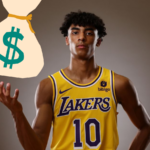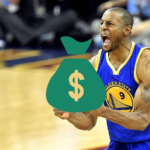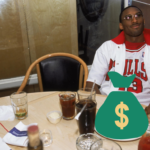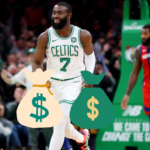The “Gilbert Arenas Rule” or “Gilbert Arenas Provision” is an NBA contract rule created in 2005 to help teams retain their talented first or second year players.
It is only applicable to players that were either 2nd round draft picks, or undrafted, and are finishing their rookie/first NBA contract (i.e. only have 1 or 2 years of experience in the league).
Second round picks are not subject to rookie scale contracts, and are also not eligible for the rookie salary cap exception.
Before this rule was created, teams would often lose their talented young players to other teams, as they were not able to match the larger salaries due to salary cap restrictions.
Read on for more facts about the Gilbert Arenas rule:
- How does the Gilbert Arenas rule work?
- Why is it named after Gilbert Arenas?
- Contract examples
- and more…
Let’s get started!
How does the “Gilbert Arenas Rule” work?

The “Gilbert Arenas Rule” aims to help teams keep their restricted free agents who are finishing their first or second year in the league.
It only applies to players that were either second round draft picks, or undrafted. First round draft picks must follow the rookie salary scale contract rules.
The Arenas rule basically limits the salary that another team can offer the player.
The maximum amount that can be offered (in the first year of the contract) is equal to the “Non-Taxpayer Mid-Level Exception”.
According to the 2023 CBA, the “Non-Taxpayer Mid-Level Exception” is equal to 9.12% of the Salary Cap. For the upcoming 2023-2024 season, this works out to $12.405 million.
By limiting the first year salary amount, it gives the player’s original team a chance to match the offer without going over the salary cap. The team can match the offer by using their Mid-Level exception, Early Bird Exception (up to 175% of his salary in the previous season), or whatever space they have left in the salary cap.
It is not a perfect solution though, as there are many circumstances where the original team still could not match. Here’s a few common issues:
Problems with the Gilbert Arenas Rule
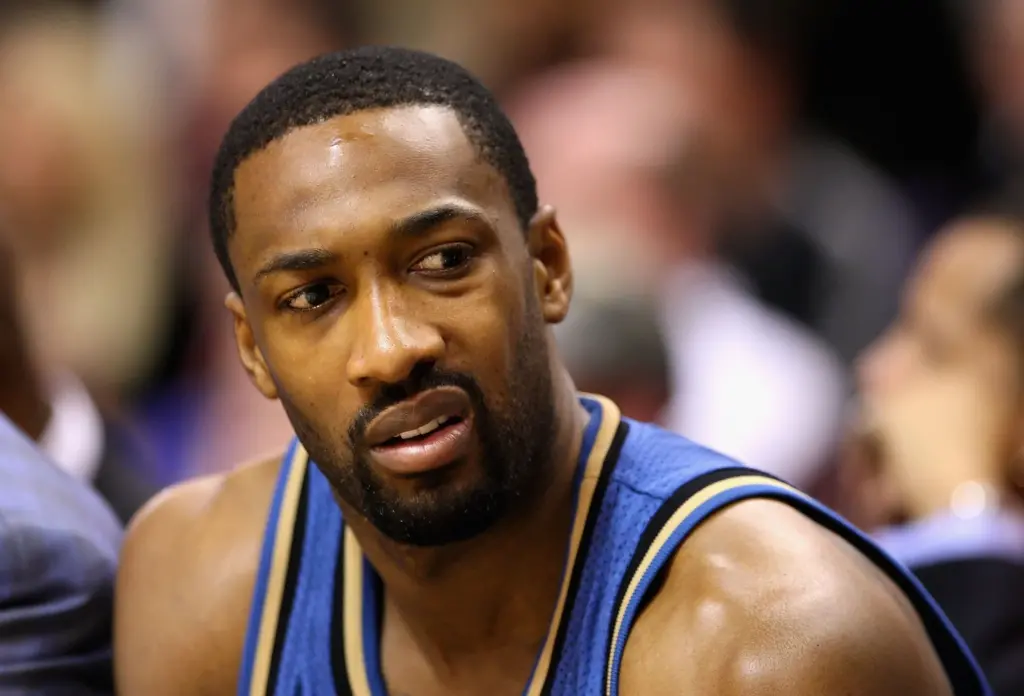
- If the original team is already over the salary cap, they may only have the “Taxpayer Mid-Level Exception” at disposal (different from the the Non-Taxpayer Exception). For the the 2023-2024, the taxpayer exception is only $5 million. This would leave the team over $7 million short.
- If the original team already used its “Non-Taxpayer Mid-Level Exception” on another player, then they may also not be able to match another team’s offer if it puts them over the salary cap.
- Similar to issue #2, if a team has two or more 2nd round / undrafted players that they want to resign, they would only be able to use the exception on one of them.
- Poison Pill Contracts — there can be a huge increase in salary from year two, to year three of the new contract offer. This can cause a lot of salary cap issues for the original team. See below for more details about Gilbert Arenas rule contract structure:
Contract Structure

A contract offer by a new team can be for a maximum of 4 years.
The 1st year can be a maximum equal to the “Non-Taxpayer Mid-Level Exception” (about $12 million in 2023-2024).
The 2nd year salary of the contract offer is limited to a max 5% raise over the 1st year.
The 3rd year salary of the contract can be up to the player’s maximum eligible salary, had the first two years not been limited by the rule.
The max for a player with less than seven years of NBA experience is equal to 25% of the Salary Cap. For the 2023-2024 season, this is equal to about $34 million. The 25% only applies to the first year of a contract. With a standard maximum 5% raise each season, the max salary of the 3rd year of a contract would be around $37 million.
The huge salary increase from the 2nd year to 3rd year is sometimes used by teams to create “poison pill” contracts. It is called this because the huge salary increase often prevents the player’s original team from being able to match the contract offer without having to pay additional tax / penalties (see Jeremy Lin example below).
The 4th year salary of the contract can have a 4.5% raise over the third year.
Confused?
Let’s look at a chart:
Max Contract Example using Gilbert Arenas Rule:
| Year | Salary | Note |
|---|---|---|
| 2023-2024 | $12,405,000 | “Non-Taxpayer Mid-Level Exception” |
| 2024-2025 | $13,025,250 | 5% raise over first year |
| 2025-2026 | $37,405,638 | Max salary if first year of contract was also the max |
| 2026-2027 | $39,088,892 | 4.5% raise over 3rd year |
| Total | $101,924,780 | Average salary of $25,481,195 |
Why is it called the Gilbert Arenas rule?
For you youngins’ out there, Gilbert Arenas (a.k.a. Agent Zero) was a budding superstar back in the early-mid 2000s.
Gilbert Arenas breakout season
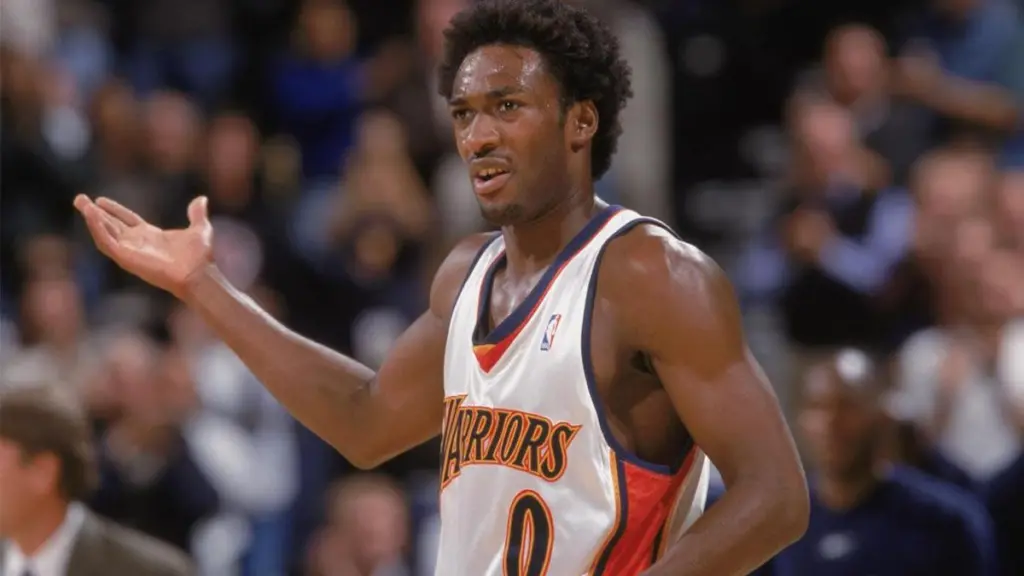
Gil was drafted in the 2nd round (31st overall) by the Golden State Warriors in 2001.
Arenas had a breakout second season (2002-2003), averaging 18 points per game, over 6 assists, and over 4 rebounds. He won the Most Improved Player Award, as well as the MVP of the Rookie-Sophmore All-Star game.
Free Agency
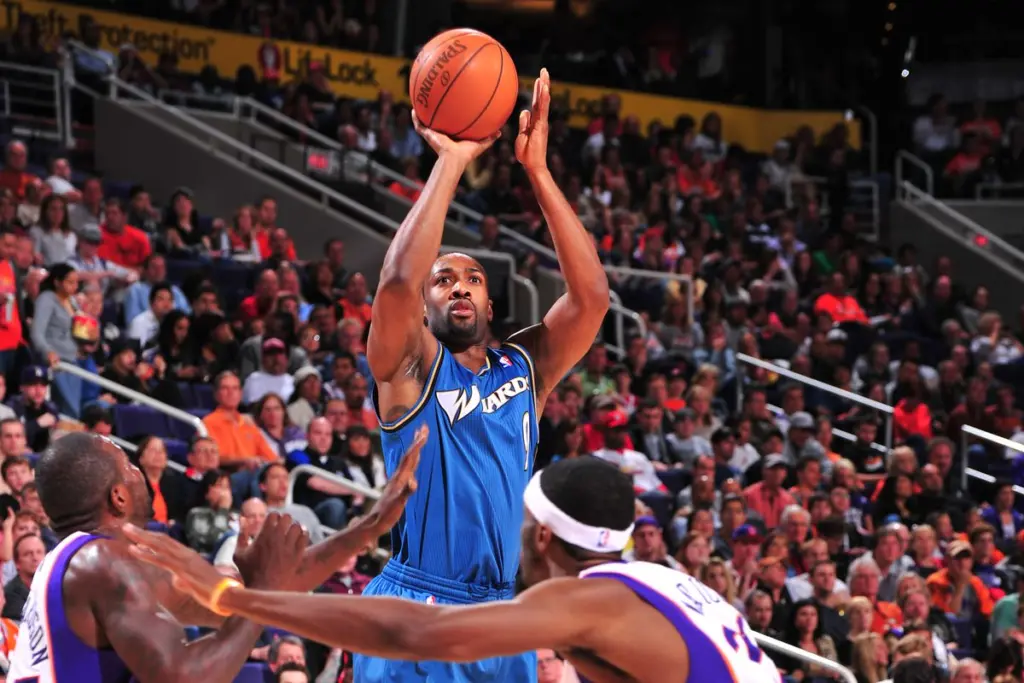
Gilbert Arenas’ rookie contract was only for 2 years, so he became a restricted free agent after the 2002-2003 season. Many teams wanted to sign Arenas, and offered him some big time contracts.
As a restricted free agent, Golden State could match offers, but only up to a certain amount — i.e. the “Early Bird Exception” ($4.9 million at the time).
The Washington Wizards ended up offering Gilbert a 6-year, $60 million contract ($8.5 million in the first year). This was unprecedented for a 2nd round draft pick with only 2 years of NBA experience.
Golden State had no way to match this offer, as it would have put them over the salary cap. They could also not use the “rookie exception” on Gilbert, as he was a 2nd round draft pick.
Note: The “rookie exception” allows teams to go over the salary cap to sign their first round draft picks.
Golden State had no choice but to let Arenas go to the Wizards. He went on to become a 3x All-Star, and one of the NBA’s top players for many seasons (before injuries/scandal derailed his career).
The NBA implemented the Gilbert Arenas provision in 2005 to try and prevent this situation from happening again.
Gilbert Arenas Provision Examples
Here are a couple examples of contracts that were affected by the Gilbert Arenas Rule.
Jordan Clarkson – A Good Deal for the Lakers
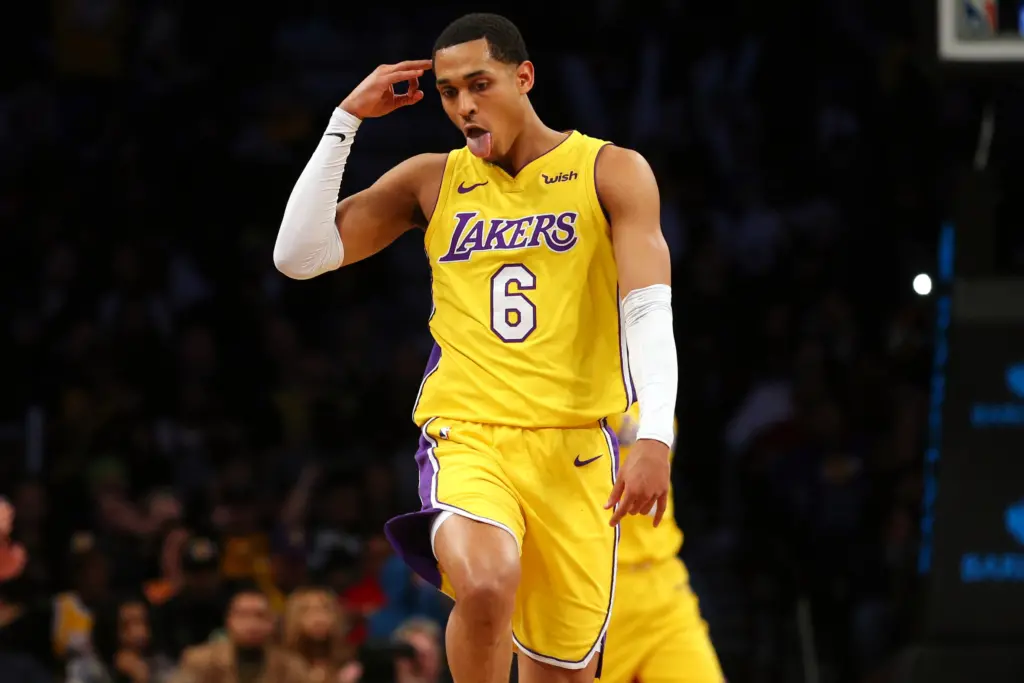
Back in 2016, Jordan Clarkson signed a 4-year, $50 million deal with the LA Lakers. Clarkson was a 2014 2nd round draft pick (46th overall) just coming off his 2-year rookie deal where he made All-Rookie First Team.
Because of the Gilbert Arenas provision, teams could only offer him the mid-level exception, which was considered very low for a top prospect like Clarkson. As a result, the Lakers were able to sign Clarkson back for a much better deal than if he was an unrestricted free agent.
Jeremy Lin – Poison Pill Contract
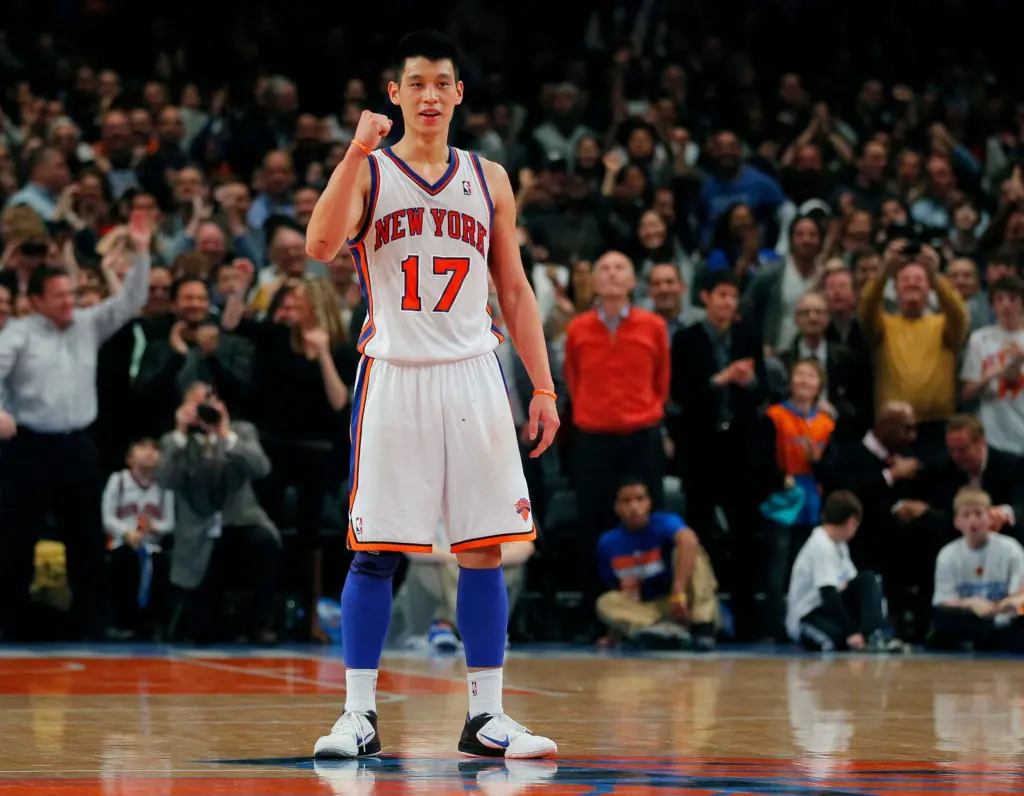
“Linsanity” was one of the funnest times in recent NBA history. Jeremy Lin went from an undrafted nobody, to superstardom during a two week stretch in 2012.
His play also helped earn him a massive 3-year, $25 million contract with the Houston Rockets the very next season. The Rockets (i.e. GM Daryl Morey) used one of the flaws of the Gilbert Arenas Provision — the massive leap in salary from year 2 to year 3 — to prevent the Knicks from resigning Lin. This is frequently known as a “poison pill” contract.
While the Rockets had plenty of cap space, and could average the $25 million contract out across 3 seasons, the Knicks could not as they were already over the cap. The contract would have basically cost the Knicks an extra $35 million in penalties/taxes. Morey probably knew that the Knicks were not willing to spend so much, and managed to sign Lin for a decent deal.
Check out this article for more interesting facts about the Jeremy Lin deal
Summary:
What do you think about the “Gilbert Arenas Rule”?
Is it more helpful or hurtful to teams and players?
Let me know your thoughts in the comments below!
